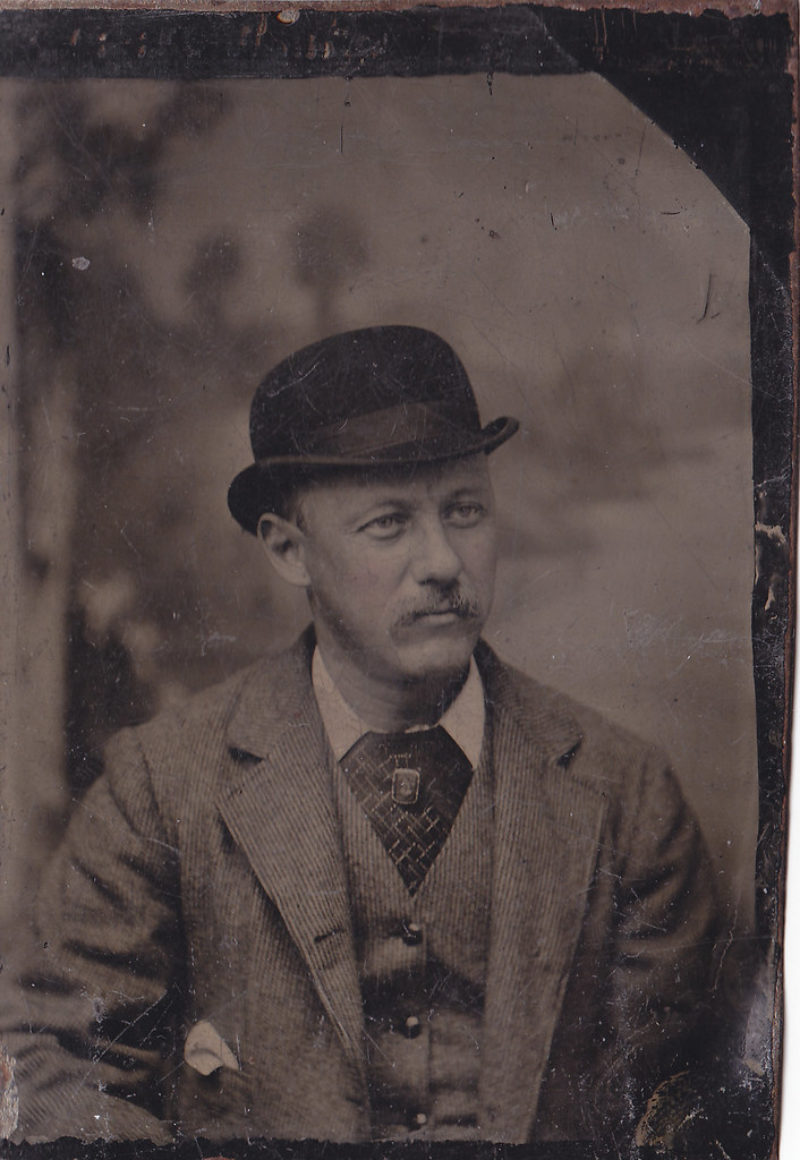
#AskAConservator: More on tintypes preservation!

"Tintype" by kschlot1 is licensed under CC BY-SA 2.0
CAPC is participating in #AskAConservator Day! Robert asks: How do you recommend safely conserving and exhibiting tin type photographs?
We already provided responses, but some photo specialists have weighed in with more details.
Greg Hill and John McElhone say:
(Tintypes are also known as ferrotypes and melainotypes in both French and English.)
Storage:
• Avoid bending or distorting the metal support. Use auxiliary mat board supports, attaching the metal plate to the mat board using photo-corners; don't apply any adhesive directly to the tintype plate.
• Enclose each tintype in an archival-quality acid-free envelope. Pertinent info can be written on the outside.
• Ensure that the tintype remains dry. They should be kept in a container that prevents humidity from entering, like seal-able plastic food (Tupperware-type) containers; add desiccated paper material (like mat board) inside the container to buffer the interior RH and maintain low humidity.
• If there are a large number of tintypes to store and these are to be accessed often by researchers, they could be stored in an album using polypropylene or polyethylene pages with pockets. In this arrangement, the plates should have an auxiliary support of two-ply mat board that fits into the plastic album page.
• Albums should be housed in a sealed box (see above) to be shelved.
Display:
• Mat and frame tintypes that are to be displayed. Display in an area with moderate and stable temperature and relative humidity; restrict light exposure – avoid any area where direct sunlight falls – especially for tintypes with hand-colouring.
• Tintypes should be matted and held in place using photo-corners so that there is no adhesive applied to the plate itself; corners can be made from black paper making them less conspicuous.
Caution:
• Do not try to remove or reduce rust where losses are present; don't try to flatten existing distortions in the support; engage a professional conservator to assess and/or treat where necessary.
• Avoid contacting the surface of the plate with fingers; handle only on the edges.
• To copy tintypes, it's best to photograph them with a camera rather than placing them on a flatbed scanner.
